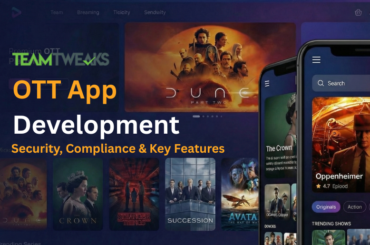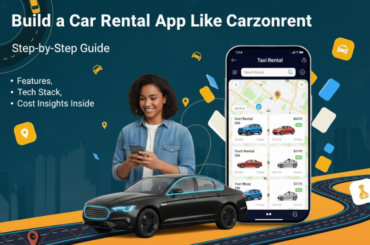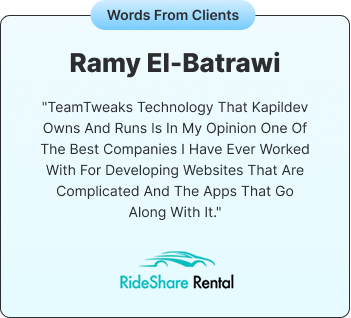Rideshare apps have reshaped the way we commute, making transportation more accessible, flexible, and convenient. Here’s a look at some of the most popular rideshare apps in the USA, breaking down their benefits, features, and pros and cons for both riders and drivers.
Rideshare Apps – Trends Shaping the Future of Transportation
Rideshare apps in the USA have come a long way and continue to grow rapidly. In the past few years, companies like Uber and Lyft have seen increased usage, with more than 90 million people using these services in 2020. By 2029, this number is expected to grow to over 140 million users. The demand for rideshare services is driven by the need for convenient, affordable, and fast transportation, especially in busy urban areas. Additionally, many companies are shifting towards electric and hybrid vehicles as part of their efforts to reduce carbon emissions and improve sustainability.
Technology has played a huge role in improving rideshare services. Features like smart route optimization, real-time tracking, and enhanced safety features have become standard. Some companies are even testing self-driving cars to further innovate the industry. Rideshare platforms are also expanding their services beyond cars, offering options like bikes, scooters, and vans to accommodate different needs. Along with these improvements, the government is introducing new regulations to ensure driver and passenger safety, creating a more secure and efficient rideshare experience for everyone.

Top Rideshare Apps in the USA
Therefore, rideshare apps have become a big part of travel in the USA. Here’s a list of the top rideshare apps people use.
List of the Top Rideshare Apps in USA
- Uber
- Lyft
- Via
- Wingz
- Gett
- Alto
1. Uber: The Pioneer in Rideshare Apps

Then, Uber, headquartered in San Francisco, is one of the trailblazers of the rideshare industry. Serving over 110 million users globally, Uber offers various services from food delivery to freight transport. Its innovation driven approach has made it a staple in the rideshare market.
Ratings & Popularity
- Android Rating: 4.4
- iOS Rating: 4.9
- Popular for: Diverse service levels and global reach
Benefits: Then, Uber’s strength lies in its wide availability and service options that cater to different needs, from affordable rides to luxurious options. Its global reach makes it convenient for travelers, while services like Uber Eats enhance user convenience. Additionally, Uber’s push for sustainability, with options like Uber Green and investments in EV car-sharing, promotes eco-friendly transport solutions.
Rider-Oriented Features:
- Service Options: Choices range from affordable UberX to luxury Uber Black and eco friendly Uber Green.
- Advance Scheduling: Then, riders can book rides up to 30 days in advance, making it perfect for airport trips.
- Fare Splitting: Conveniently split fares with friends for group travel.
- Multiple Drop-Off Points: Set individual drop-offs within the app, As a result of ideal for shared group rides.
Driver-Oriented Features:
- Rating System: Then allows mutual feedback, helping ensure a respectful and safe environment.
- Earnings Boost: Bonuses in certain cities increase income potential.
- Uber Pool Opt Out: Drivers can opt out of shared rides if they prefer one-on-one trips.
- Accessibility Options: Features like visual notifications assist hearing impaired drivers.
Pros and Cons:
Pros:
- Extensive service options
- Global availability, ideal for travelers
- Then, reliable for a wide range of trip lengths
Cons:
- Surge pricing can raise costs significantly during peak times
- Higher commission rates can impact driver earnings
2. Lyft: A Community-Focused Rideshare Apps

Lyft, founded in 2012, offers a community centric alternative to Uber with a focus on sustainability. It’s known for its environmentally-friendly choices and bike/scooter rental options, giving users a broad range of transportation choices.
Ratings & Popularity
- Android Rating: 4.6
- iOS Rating: 4.9
- Popular for: Environmentally friendly options and community centered approach
Benefits: Lyft’s appeal lies in its community oriented culture, affordable options, and commitment to green initiatives. Programs like Lyft Pink provide discounts and perks for frequent riders, making it a cost effective option. Additionally, Lyft’s charitable initiatives let riders round up their fares for donations, fostering community support.
Rider-Oriented Features:
- Service Options: Standard Lyft rides, premium Lyft Lux, and shared rides.
- Lyft Pink Membership: Discounts, priority airport pickups, free scooter rides, and waived cancellation fees.
- Charitable Giving: The LyftUp program allows fare round ups for charity.
- Wait & Save: Reduced fare options for riders willing to wait during peak times.
Driver-Oriented Features:
- Increased Earnings: Bonuses in specific cities during high demand times.
- Cash Out Anytime: After that express Pay offers same-day access to earnings.
- Rental Program: Drivers can rent vehicles with insurance and maintenance included.
- Feedback Tools: Thereafter drivers receive feedback reports to improve service quality.
Pros and Cons:
Pros:
- Environmentally conscious ride options
- Strong community focus
- After that affordable membership program for frequent riders
Cons:
- Limited availability outside major cities
- Lower overall earnings in some areas compared to Uber like app.
3. Via: Affordable and Eco-Friendly Carpooling

Via emphasizes affordable, eco-friendly shared rides by matching riders going in the same direction. Its carpool model is popular in cities with high commuting needs, reducing both traffic and costs for riders.
Ratings & Popularity
- Android Rating: 3.4
- iOS Rating: 4.5
- Popular for: Shared rides and affordability
Benefits: Via’s carpooling model is both cost effective and sustainable. With flat rate pricing, After that Via provides a predictable fare structure, and the corner to corner pickup option makes trips faster and more efficient.
Rider-Oriented Features:
- Optimized Carpooling: Matches riders going in the same direction to cut down on costs.
- Flat Pricing: Fixed rates for more predictable costs.
- Corner-to-Corner Pickups: Reduces wait times and streamlines routes.
- Referral Program: Earn free rides by referring friends.
Driver-Oriented Features:
- Low Commission: A 10% commission rate allows drivers to keep more earnings.
- Vehicle Rental: Rental options with insurance and maintenance for those without vehicles.
- Flexible Hours: Work when it’s convenient.
- Support & Assistance: Real time support for a smoother experience.
Pros and Cons:
Pros:
- Affordable flat rate pricing
- After that reduces traffic with optimized carpooling
- Low commission fees for drivers
Cons:
- Limited to certain cities
- At that point less flexibility for solo rides
4. Wingz: Reliable Pre-Scheduled Rides

Wingz is designed for those who need reliable, pre scheduled rides, particularly for airport transfers. With the ability to book rides weeks in advance, it focuses on providing a consistent, stress-free experience.
Ratings & Popularity
- Android Rating: 3.0
- iOS Rating: 4.9
- Popular for: Pre-scheduled rides and airport transfers
Benefits: Wingz offers the predictability of pre-scheduled rides with flat-rate pricing, making it a reliable choice for airport transfers and planned trips. The app’s driver repeat-request feature also builds trust and consistency for frequent travelers.
Rider-Oriented Features:
- Advanced Scheduling: Book rides up to two months ahead.
- Flat-Rate Pricing: Thereafter avoid surge pricing for consistent costs.
- Trusted Drivers: After that request the same driver for future trips.
- Airport Specialization: Perfect for dependable airport transfers.
Driver-Oriented Features:
- Driver Familiarity: Build repeat client relationships.
- Low Commission: More earnings retained by drivers.
- Flexible Work Options: Drivers choose their schedules.
Pros and Cons:
Pros:
- Dependable for pre-scheduled rides
- Transparent flat-rate pricing
- High level of service consistency
Cons:
- Limited availability in smaller markets
- Not ideal for on-demand rides
5. Gett: Business-Centric Rideshare Apps

Therefore, Gett specializes in corporate transportation solutions, providing professional services tailored for business travelers. It is especially popular in cities like New York, offering features that integrate with corporate expense systems.
Ratings & Popularity
- Android Rating: 4.6
- iOS Rating: 4.8
- Popular for: Business-focused rides
Benefits: Gett’s corporate focus provides dependable transportation at competitive prices. Its expense integration with corporate systems simplifies billing, making it ideal for business travel.
Rider-Oriented Features:
- Business-Focused Options: Professional rides with business-friendly features.
- Fixed Pricing: Transparent and competitive rates.
- Expense Integration: After that seamless expense tracking with corporate tools.
Driver-Oriented Features:
- Quality Standards: Professional driver training ensures high service levels.
- Flexible Hours: Drivers can work as per their schedule.
- Low Commission: Competitive rates allow for higher driver earnings.
Pros and Cons:
Pros:
- Ideal for corporate clients
- Lower pricing than traditional taxis
- After that simplifies corporate billing
Cons:
- Limited service area
- Primarily suited for business travelers
6. Alto: Premium Service with Employee Drivers

Alto stands out by hiring employee drivers and using branded SUVs for a luxury experience. This unique approach provides enhanced quality control and safety measures, appealing to riders seeking a premium option.
Ratings & Popularity
- Android Rating: 3.7
- iOS Rating: 4.7
- Popular for: Employee drivers and luxury experience
Benefits: Alto’s model offers a consistent, high-end experience by employing drivers and maintaining company-owned vehicles. This allows for greater control over service quality and safety, benefiting both riders and drivers with structured schedules and benefits.
Rider-Oriented Features:
- Luxury Vehicles: Company branded SUVs offer a premium experience.
- In-App Controls: Riders control music and temperature settings.
- Membership Plan: Monthly and annual discounts and perks for frequent riders.
Driver-Oriented Features:
- Employee Benefits: Drivers are full employees, receiving benefits and hourly pay.
- Enhanced Safety: After that background checks and training provide a safer experience.
- Predictable Schedules: Drivers enjoy stable hours and pay.
Pros and Cons:
Pros:
- Consistent quality through employee drivers
- Premium vehicle options
- Flexible scheduling for drivers
Cons:
- Limited availability in select cities
- Higher pricing compared to standard rideshare services
Price Comparison Table for Rideshare Apps
| App | Service Model | Base Fare | Per Mile Rate | Extra Fees |
|---|---|---|---|---|
| Uber | Dynamic Pricing | $1-$2 | $0.96 – $1.96 | Surge Pricing |
| Lyft | Dynamic Pricing | $1-$2 | $0.85 – $2.00 | Prime Time |
| Via | Flat Rate | $3 | $0.50 – $1.00 | None |
| Wingz | Flat Rate | $10-$15 | $1 – $2 | None |
| Gett | Fixed Pricing | $10-$12 | $1.20 – $1.80 | None |
| Alto | Subscription | $2-$4 | $1.25 – $2.50 | None, 30% off w/sub |
How to Develop a Ridesharing Apps: Essential Steps and Technology Stack

Ride hailing apps have revolutionized the way we commute, offering convenience, flexibility, and efficiency. Developing a rideshare apps involves strategic planning, robust technology, and expert knowledge of the on-demand economy. Below, we break down the steps and technologies needed to create a successful rideshare apps, designed to meet the needs of both riders and drivers.
Step 1: Market Research and Competitor Analysis
Before diving into development, it’s essential to understand the market landscape and identify key competitors. This step helps define the app’s unique value proposition and ensures it stands out in a competitive field.
- Identify Target Audience: After that determine who your users will be city commuters, corporate clients, tourists, etc.
- Analyze Competitors: Study successful apps like Uber, Lyft, and others to see what features they offer, their strengths, and areas for improvement.
- Understand User Needs: Conduct surveys or focus groups to understand what users value most in a ridesharing app, such as safety, affordability, convenience, or eco friendly options.
Step 2: Define the Core Features and Functionality
To build a rideshare apps, you’ll need to incorporate core functionalities that cater to both riders and drivers. Here’s a look at the essential features.
Rider-Oriented Features
- Real-Time Tracking: Riders should be able to track their driver’s arrival time and estimated journey duration.
- Fare Calculation: Display transparent fare calculations based on distance, time, and potential surge pricing.
- Payment Gateway Integration: Secure, easy-to-use payment options, including credit cards, digital wallets, and cash.
- Rating and Reviews: After that allow users to rate and review their rides, helping maintain quality and safety.
Driver-Oriented Features
- Navigation and Route Optimization: Provide integrated maps and route optimization to help drivers get to their destinations quickly and efficiently.
- Earnings Tracking: After that enable drivers to view their earnings and access daily, weekly, or monthly breakdowns.
- Ride Accept/Reject Option: Thereafter give drivers control over accepting or rejecting ride requests.
- Availability Toggle: Let drivers indicate when they’re available or off-duty for added convenience.
Step 3: Technology Stack for Rideshare Apps
Creating a high-performance, scalable, and secure rideshare apps requires a combination of modern technologies and tools. Here’s a detailed look at the technologies commonly used:
1. Backend Development:
- Programming Languages: Node.js, Python, or Java are popular choices due to their scalability and support for high-traffic applications.
- Frameworks: Express.js (for Node.js), Django (for Python), or Spring Boot (for Java) are commonly used frameworks that offer robust backend services.
- Database: MongoDB for NoSQL or PostgreSQL/MySQL for relational data, depending on your on-demand app’s requirements.
2. Frontend Development: Rideshare Apps
- Languages & Frameworks: For Android app development, Kotlin is recommended, while Swift is ideal for iOS app development. For cross-platform development, React Native or Flutter app development are highly efficient.
- UI/UX Design Tools: Some UI/UX design tools Figma and Adobe XD help to create a user-friendly and visually appealing app interface.
3. Cloud Computing:
- AWS/Azure/Google Cloud: Cloud platforms like AWS, Microsoft Azure, or Google Cloud provide scalable computing resources for hosting the app. They also offer tools for database management, server hosting, and data storage.
- Containerization (Docker): Thereafter docker simplifies application deployment by allowing Mobile apps to run in isolated containers, ensuring consistency across environments.
4. DevOps:
- CI/CD Tools:Jenkins, GitLab CI/CD, CircleCI, or Bitrise automate testing and deployment, ensuring rapid releases and minimizing downtime.
- Monitoring Tools: New Relic, Datadog, or Prometheus help monitor app performance and detect issues in real time.
5. IoT and Asset Tracking:
- IoT Sensors: For companies managing fleets, IoT sensors can track vehicle usage, fuel levels, and maintenance needs.
- GPS Tracking: Integrated GPS systems provide real time location data for drivers, enhancing route accuracy and ETA predictions.
6. Machine Learning and AI:
- Predictive Analytics: Predict ride demand, optimize pricing, and adjust driver allocation based on historical and real-time data.
- Chatbots for Customer Support: AI driven chatbots can handle customer inquiries, resolve issues, and provide 24/7 support.
7. Security:
- Data Encryption: Ensure user data is encrypted to protect against potential breaches.
- Authentication: Two-factor authentication and secure login processes safeguard user accounts.
- Regulatory Compliance: Follow data protection laws such as GDPR and CCPA.
Step 4: Build the MVP (Minimum Viable Product)
An MVP helps you test your app’s core features and gather user feedback before a full launch. This version should focus on the essential functionalities, allowing for quick testing and adaptation.
- Essential Features Only: Limit the initial release to the most important features for riders and drivers.
- User Feedback Collection: Gather insights from early users to identify bugs and opportunities for improvement.
- Iterative Development: Thereafter use Agile methodologies to refine the app, adding features and enhancements based on feedback.
Step 5: Test and Launch the App
Thorough testing is crucial to ensure the app functions seamlessly across all devices. Here are the key testing stages.
- Unit Testing: Validate the functionality of individual app components.
- Integration Testing: Ensure different modules work together as intended.
- Performance Testing: Check how the app handles high traffic and intensive data loads.
- User Acceptance Testing (UAT): Thereafter conduct beta testing with real users to assess the app’s functionality in a real world setting.
Upon successful testing, you can launch the app on app stores and begin promoting it.
Step 6: Continuous Monitoring and Maintenance
After launch, ongoing maintenance and updates are essential to keep the app competitive. Implementing DevOps practices helps streamline updates, fix bugs, and release new features rapidly.
- Frequent Updates: Thereafter continuously update the app with new features and security enhancements.
- Customer Support: Therefore Offer 24/7 customer service to address user inquiries and concerns.
- Feedback Integration: Continuously integrate user feedback to enhance the app experience.
- Scalability Planning: Use cloud services to manage increasing user demand, ensuring a smooth experience even during peak times.
Leveraging Advanced Technologies for Enhanced Rideshare Apps
1. Blockchain for Transparent Transactions
Blockchain technology can enhance transparency and security in payment processing, promoting trust between riders and drivers.
2. Artificial Intelligence (AI) and Machine Learning
AI can predict user demand, optimize driver routes, and adjust pricing dynamically. Machine learning algorithms also enhance security by detecting fraud and unusual activity patterns.
3. Big Data for User Insights
Analyzing data on user behavior, ride patterns, and peak times helps refine the app, offering tailored services and optimizing driver allocation.
The cost of building a ridesharing app can vary significantly based on the app’s features, technology stack, and development approach. Below, we break down the factors influencing the cost and provide an estimated range for building a high-quality, scalable ridesharing app.
Cost Estimation to Build an Rideshare Apps
The cost of building a rideshare apps can vary significantly based on the app’s features, technology stack, and development approach. Below, we break down the factors influencing the cost and provide an estimated range for building a high-quality, scalable ridesharing app.
Factors Influencing the Cost
1. App Features and Complexity
- Basic Features: Basic features include user registration, booking rides, fare estimation, and real time tracking. These are essential for a Minimum Viable Product (MVP) and generally cost less.
- Advanced Features: More complex features, like AI-based route optimization, multiple payment options, fare splitting, and in-app chat, increase costs due to additional development time.
- Admin Panel: An admin dashboard is necessary for managing users, payments, and analytics, and it adds to the overall cost.
2. Platform (iOS, Android, or Both)
- Developing for a single platform (iOS or Android) will cost less compared to building a Hybrid app. However, most ridesharing apps choose to launch on both platforms to reach a wider audience.
- Native vs. Cross-Platform: Native apps (built specifically for iOS or Android) provide better performance but cost more. Cross-platform options like Flutter or React Native reduce development time and cost.
3. Development Team Composition
- A typical team for a ridesharing app consists of project managers, UI/UX designers, backend developers, frontend developers, and quality assurance (QA) testers.
- In-House vs. Outsourcing: In house development is generally more expensive due to salaries and overhead costs. Outsourcing to an experienced mobile app development company can be cost effective and scalable.
4. Technology Stack
- Technologies such as GPS tracking, cloud computing, and IoT add to development costs. For example, using AWS or Google Cloud for hosting, Docker for containerization, and DevOps tools for CI/CD integration can increase the overall budget.
- Advanced tech solutions like AI for predictive analytics, IoT for fleet management, and blockchain for secure transactions will also influence costs.
5. Location of the Development Team
- The hourly rates for development vary widely by location. For example:
- North America: $100 – $200/hour
- Western Europe: $70 – $150/hour
- Eastern Europe: $40 – $80/hour
- India & Southeast Asia: $20 – $50/hour
6. Maintenance and Updates
- Post-launch maintenance is crucial for app performance, bug fixes, security updates, and adding new features. Generally, maintenance costs are around 15-20% of the initial development cost annually.
Estimated Cost Breakdown by App Complexity
1. Basic Ridesharing App (MVP)
- Features: Next user registration, ride booking, fare estimation, real-time tracking, payment processing, and then basic admin panel.
- Estimated Cost: $20,000 – $40,000
- Timeline: 3 – 6 months
2. Mid-Range Ridesharing App
- Features: Basic features plus user ratings, fare splitting, push notifications, ride scheduling, and a more advanced admin panel.
- Estimated Cost: $40,000 – $80,000
- Timeline: 6 – 9 months
3. Advanced Ridesharing App (Like Uber or Lyft)
- Features: Then, all features in the mid-range app, plus AI-driven route optimization, IoT integration, real-time analytics, in-app chat, and multiple payment options.
- Estimated Cost: $80,000 – $150,000+
- Timeline: 9 – 12 months or more
Conclusion
Finally, Developing a ridesharing app requires thoughtful planning, a solid technology foundation, and an understanding of the dynamic on-demand market. From initial market research to defining features and selecting the right technology stack, each step is essential to building a successful app. Leveraging technologies like cloud computing, AI, and IoT ensures a secure, scalable, and user-friendly app that caters to both riders and drivers.
Partnering with an experienced mobile app development company can streamline this process, helping you bring your ridesharing concept to life efficiently. With the right team, you can create a high-quality app that not only competes with established brands like Uber and Lyft but also meets the evolving needs of modern users. If you’re ready to transform your ridesharing vision into a reality, reach out to our team for expert guidance on creating an app that drives growth and connects communities.

















